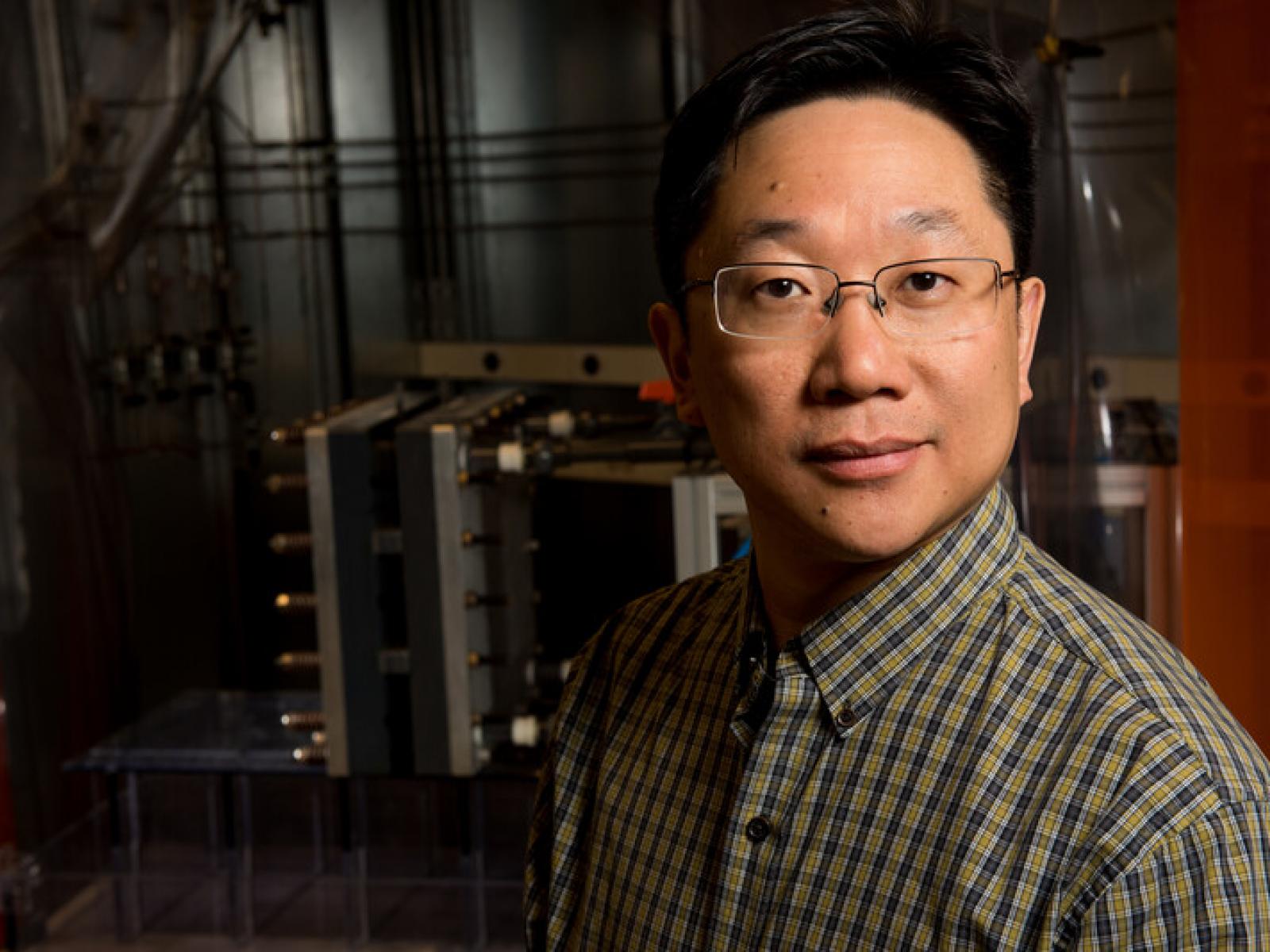Wang Recognized by Electrochemical Society and American Chemical Society
Wei Wang is an expert in developing redox flow batteries and energy storage material

Wei Wang is the chief scientist for research and development of stationary energy storage technologies, including lithium ion, sodium ion, and redox flow batteries.
(Photo by Andrea Starr | Pacific Northwest National Laboratory)
Materials scientist Wei Wang has been recognized with awards from two professional societies for his contributions to the field of electrochemical energy storage.
He was awarded the 2022 Emerging Researcher Award from the American Chemical Society’s Energy and Fuels division at the ACS annual meeting in August.
He will receive the Electrochemical Society’s Pacific Northwest Section Electrochemistry Research Award later this year.
At Pacific Northwest National Laboratory (PNNL), Wang is the chief scientist for research and development of stationary energy storage technologies, including lithium ion, sodium ion, and redox flow batteries.
He is also the director of the laboratory-funded Energy Storage Materials Initiative. This project aims to transform the development of energy-related materials by using physics-informed machine learning to accelerate material design and validation at industrially relevant scales.
“Our goal is to help get energy storage materials from the lab to the grid faster,” Wang said.
Optimizing organic electrolytes for redox flow batteries
Redox flow batteries have been one of Wang’s specialties since he joined PNNL in 2009. These batteries contain water-based electrolytes to carry ions that store energy. They are more promising for grid-scale storage than lithium ion batteries because flow batteries are more suitable for long-duration energy storage with fewer safety concerns.
However, for widespread deployment of grid-scale energy storage, materials inside the batteries still require research and development to identify low-cost, environmentally friendly, and widely available materials. Organic molecules are a potentially useful class of materials because they are made from the most common elements available: carbon, hydrogen, nitrogen, and oxygen.
“The challenge is that there are a lot of organic molecules, and few have properties useful for long-term energy storage,” Wang said. “The process of identifying them for redox flow battery applications still involves a lot of trial and error.”
Wang and his colleagues have been using an approach called molecular engineering to accelerate materials design for battery performance. This approach involves designing material structures for specific purposes, calculating some of those properties for specific materials, synthesizing the best candidate materials, and testing the performance in the lab.
PNNL researchers, led by Wang, recently engineered two organic molecules to optimize their energy storage capacity and improve their stability in operation. These are the two key properties needed for energy storage materials in redox flow batteries. For each example, the team’s engineering approach led to large gains in redox flow battery performance.
In work reported in the journal Science earlier this year, a fluorenone-based aqueous flow battery tested by the team in the laboratory lost less than three percent of its energy capacity after the equivalent of several years of charging cycles under normal operation. The test battery, which was about the size of a large postage stamp, had an energy density more than twice that of vanadium batteries in use today.
From targeted molecular engineering to accelerated materials discovery
Through the Energy Storage Materials Initiative, Wang and his colleagues are expanding their molecular engineering approach to identify promising energy storage materials based on properties. Now they are also using machine learning to accelerate the process of prototyping materials and testing them in large systems suitable for grid-scale storage.
“The Energy Storage Materials Initiative is part of the fundamental scientific foundation for PNNL’s Grid Storage Launchpad,” Wang said. This future national grid energy storage research and development facility, to be located at PNNL, includes investments from the state of Washington, Battelle, and the laboratory.
Published: October 4, 2021